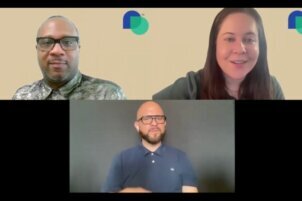Read the webinar transcript
Download the accessible PowerPoint presentation
Watch the webinar on YouTube with live embedded captions
Session Summary: Creating Accessible Documents: Word, PDF and Power Point. Come learn the basics of document accessibility with us. In this user-friendly presentation you will learn how to ensure that people with disabilities are able to get your information, understand it, and use it. Feel free to invite your IT, graphics, finance, administrative and other members of your team to join you for this free training. The speaker is fantastic – he makes it all way easier than you ever thought possible – and it’s free!
Though editorial and other quality-control measures are part of a well-defined clearance process in many organizations, one commonly over looked quality-control measure is ensuring accessibility. File accessibility has legal roots in current Section 508 of the Rehabilitation Act and will be strengthened with the upcoming Section 508 Refresh, which will likely roll in existing WCAG 2.0 standards (Level A and Level AA). This presentation will provide a brief overview of the current Section 508 standards and the upcoming refresh, with an emphasis on how they can inform document design. The presentation will then introduce two easy-to-check items for each of the major file types (i.e., Word Documents, PowerPoint Documents, and PDFs) and three easy-to-check items common to all file types. The presentation is not meant to be a comprehensive tutorial on everything needed to make documents accessible; rather, it is an introduction meant to support one key take-away message: making files accessible can take time, money, and resources—so accessibility must be actively planned into and accounted for in a project’s budget and timeline.
Featuring:

Cristopher Broyles
Cristopher Broyles is the Web Accessibility Program Manager for ASPA/DCD at HHS—a program that encompasses nearly 2.5 million web pages, 30,000+ files, across 11 Operating Divisions. He has been working in accessibility and communications for nearly 10 years, and he has drafted SOPs, guidance documents, and policy documents in support of accessibility and compliance with Section 508. In addition to his professional work, he is a published academic who is currently working on his doctorate in Technical Communication at Texas Tech University. His main area of interest is the rhetorical underpinnings of descriptions written for nontext elements, such as alt text, and how user-centered design can reshape how such descriptions are created.








Comments on this entry are closed.